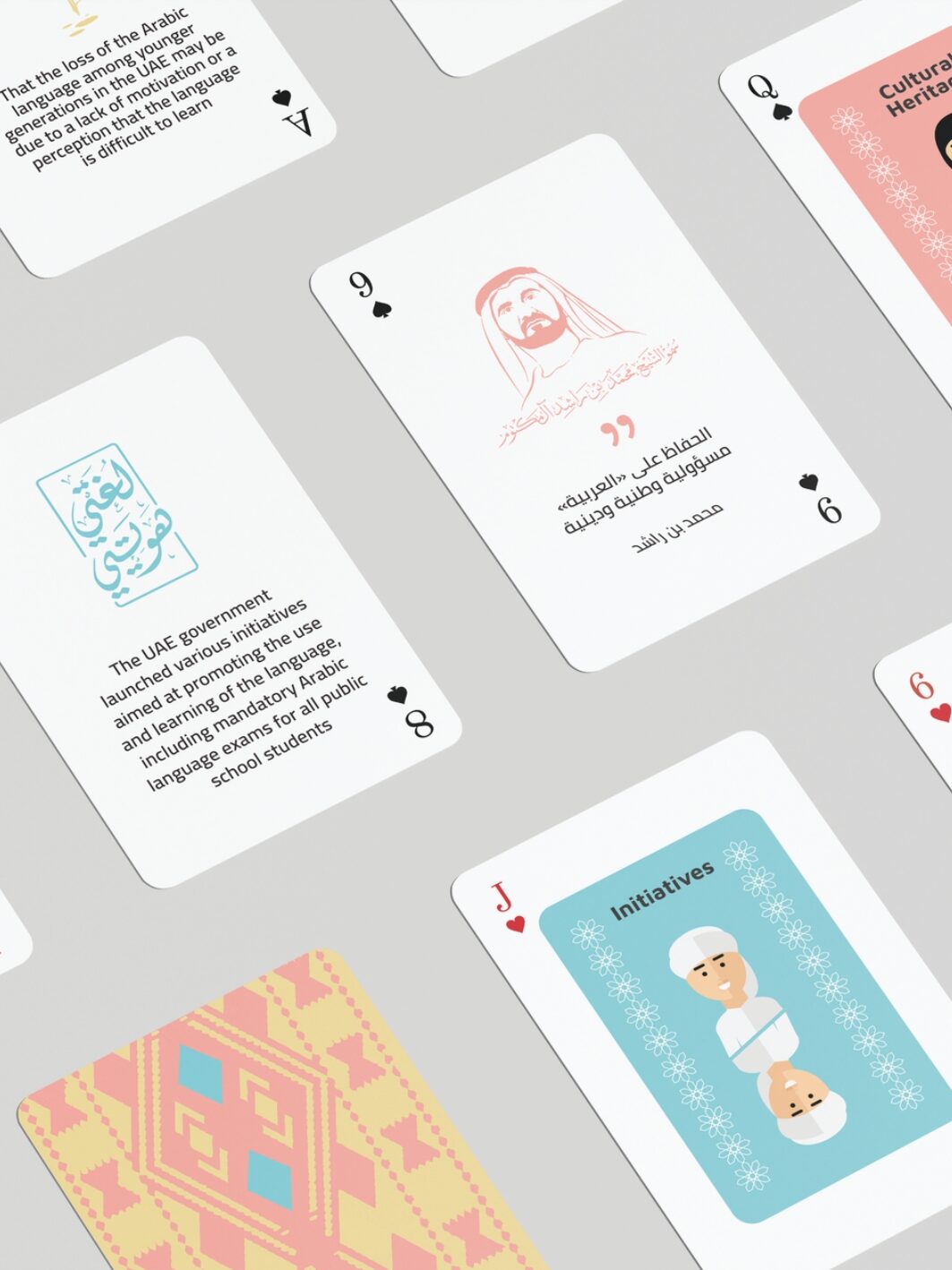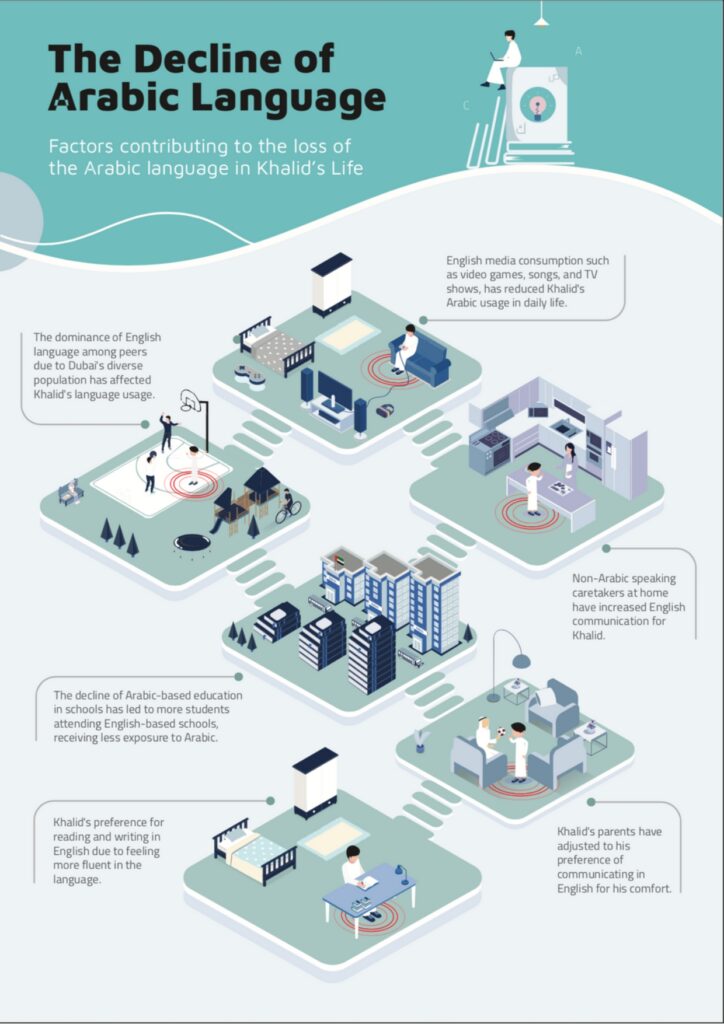Dubai Institute of Design and Innovation (DIDI)’s May 2023 graduate exhibition explored the many disciplines of design, from product to fashion and gaming, with a special focus on sustainability ahead of the upcoming 2023 United Nations Climate Change Conference (COP 28). From multifunctional clothing created from zero-waste pattern-cutting techniques to underwater sculptures made from bivalve seashells to support marine life, the projects demonstrate the school’s approach to creative, data- and innovation-driven solutions that enrich communities and the environment.
DIDI, which offers the region’s first bachelor of design degree and a curriculum developed in collaboration with the Massachusetts Institute of Technology and Parsons School of Design, was established in 2018 to empower a new generation of designers, innovators, and entrepreneurs in the Middle East and beyond. The Graduate Exhibition is a key fixture in the annual calendar when senior-year students showcase four years of design thinking and product development.
Khaleejesque spoke with DIDI alumni, Noora Makki and Halah AlQasibi, to know more about the process behind their final project.

Saira Malik: Can you talk a little bit about your final graduation project?
Noora Makki/Halah AlQasibi: Our thesis explores the factors contributing to the decline of the Arabic language among the youth. We aim to investigate the reasons for the decline and its impact on language proficiency and cultural identity, including how technology, education, and social factors influence this phenomenon.
(S.M.): What was the inspiration and idea behind the project?
(N.M.)/(H.AQ): This project is of immense personal significance to us as we recognize the importance of our mother tongue, Arabic, and the preservation of our cultural heritage. While learning a second language like English has its many benefits, we also value the richness and depth that our native language and culture bring to our identity.
With this foundation, we seek to spread awareness of our chosen topic and emphasize the importance of embracing and preserving our mother tongue and cultural heritage. We can contribute to a more diverse and inclusive global community by nurturing and celebrating our linguistic and cultural roots.
Our vision for this foundation extends beyond our own contributions. We hope it will serve as a platform where others can add their insights, experiences, and knowledge, creating a collective resource that fosters mutual learning and understanding. By promoting the sharing and exchanging of ideas, we hope to cultivate an environment where different perspectives are valued and celebrated.
(S.M.): How did you approach researching this project?
(N.M.)/(H.AQ): We conducted extensive research using various methodologies, including qualitative and quantitative approaches. One aspect involved interviewing three generations of Emiratis to compare their perspectives and experiences. We created personas for each generation and transformed the data into information graphs to visualise our findings.
In addition to our primary research, we interviewed Dr Ali bin Tamim, Chairman of the Abu Dhabi Language Center. This was a particularly significant opportunity as Dr Tamim shares our goal of preserving Arabic for future generations. We gained valuable insights through conversations with him and past research papers to enrich our project.


(S.M.): What was the biggest challenge when designing the project?
(N.M.)/(H.AQ): We had to start completely from scratch, which was one of our primary challenges. The topic we were addressing was both sensitive and relatively new, which meant there was limited existing research to rely on. As a result, we had to conduct our own investigations and gather original data.
This process involved extensive efforts to reach out to various sources, from individuals to organizations, to collect relevant information and insights. We conducted interviews, engaged reports, and sought firsthand experiences relevant to our subject matter. By independently gathering our own data, we aimed to contribute to the knowledge base surrounding this emerging phenomenon.
Navigating uncharted territory presented its own set of challenges. However, it also provided us with the opportunity to make a unique contribution to the field. By undertaking this research from scratch, we aimed to fill gaps in existing knowledge, shed light on important aspects of the topic, and generate valuable insights that can benefit academia and society.
(S.M.): After researching the decline of the Arabic language among the youth, what are your suggestions to tackle this problem?
(N.M.)/(H.AQ): The ultimate objective of this project is to foster widespread awareness. Throughout the journey, we humbly acknowledged that we alone could not single-handedly address the complexities of our topic. However, we recognized the opportunity to play a vital role in raising awareness for future generations. To achieve this, we employed various methods of data visualisation. We created engaging and informative content in different forms, such as a video and infographics.
These visual tools effectively conveyed the factors contributing to the decline of the Arabic language. We also designed a deck of cards, inspired by the cultural practice of gathering in a majlis. The cards served as a unifying element, transcending language fluency and age, as they brought people together through the shared experience of playing games. We used a standard card deck with facts and initiatives about the Arabic language, which were presented in English and Arabic. Through this subtle approach, we aimed to disseminate awareness effectively.







